You cannot depend on your eyes when your imagination is out of focus.
— Mark Twain
Chapter 7
The Camera in the Mind's Eye

"Coming from years of writing, drawing and producing comic books and comic strips, on my first day of shooting film, I was composing shots with too much headroom…"
Read More »
"In the beginning of interactive [video] game development, -the programmers did all the art. …"
Read More »
"…There always seems to be that time in the schedule where everybody hates everybody.…"
Read More »Whether you ace a director, camera operator, or comics artist, you have co make conscious decisions about all aspects of "shot" composition, including how far away the "camera" will be, what vantage point the spectator wiil see the action from, and how distance and camera angle will change from shot to shot as the scene progresses. The vantage point of the spectator, or point of view, will in turn determine the perspective, how the objects in the frame appear relative to the homon line. Decisions made about how to frame a scene for a screen or panel will determine whether the shot will enhance or detract from narrative power.
Deciding where to place the camera in each shot should never be arbitrary. Camera angles provide narrative focus for the artist. For example, a worm's eye view of a standing subject makes that person appear tall and domineering. A down shot accomplishes the reverse and diminishes the same person. Whenever possible, camera angles should be motivated - camera placement is, in a sense, where the reader is placed
Extreme Long Shot (ELS)
This is one of the many common framing techniques that span all visual storytelling media. It is used to orient the viewer to where the character(s) are, who the character(s) are, and the spatial relationship between characters and their environment. It is also used to depict vistas and as an ESTABLISHING LONG SHOT. In comic books and interactive games, these are drawn from such a great distance away that object details, such as cars or people, are not clearly visible.
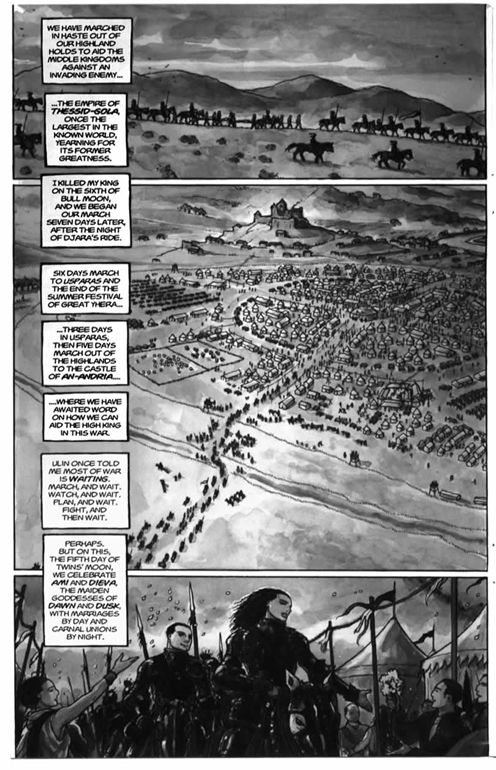
Mark Smylie, creator and artist for Artesia believes that an epic military fantasy require many panoramas; with the story calling for sweeping vistas showing armies and landscapes. The book is best showcased using traditional and relatively simple panel-to-panel page designs. "Chopped-up panels and funky page layouts wouldn't work with the story style.'
© 2003 Mark Smylie

Scene from Septerra Core RPG game.
© 2001 Valkyrie Studios. All rights reserved. Used with permission.
Long Shot (LS)
Used to depict the entire area of the action.

A scene from Operation Extermination 3D comic book adventure.
Copyright: Operation Extermination is TM & © 2001 CWS Studios. All rights reserved. Used with permission.
Medium Long Shot (MLS)
This is typically used to present a full length view of the character(s) or the action, but not the full set or environment.

From the short film Ways of Knowing, by reelradicals.com.
Copyright: Ways of Knowing is TM & © 2001 Reel Radicals. www.reelradicals.com. All rights reserved. Used with permission.
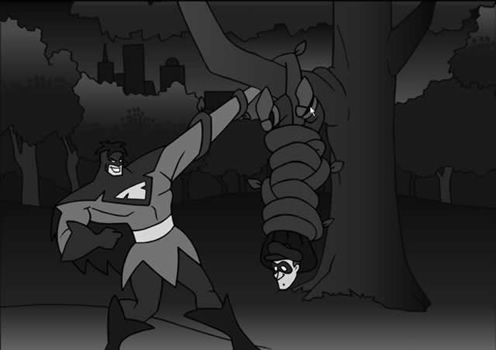
Copyright: Skeleton Krew is TM & © 2001 BOXTOPTV.COM. All rights reserved. Used with permission.

Copyright: P3: Population 3 Million is TM & © 2001 BOXTOPTV.COM. All rights reserved. Used with permission.
Medium Shot (MS)
This one is used to depict characters above the knees or below the waist to the head (see above). It may involve several characters within the frame, but reveals facial expressions. In comic books, the Medium Shot can also mean having the figures (or main object) visible from head to toe (see below).
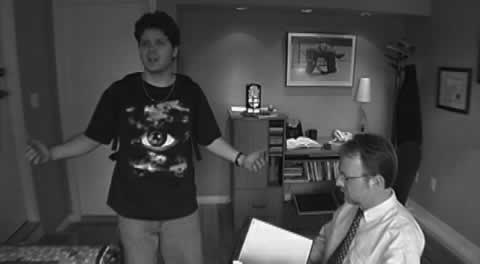
Copyright: Ways of Knowing is TM & © 2001 Reel Radicals. www.reelradicals.com. All rights reserved. Used with permission.

Copyright: Ralph Snart is TM & © 2001 NOW Comics and Marc Hansen. All rights reserved. Used with permission.

Copyright: P3 is TM & © 2001 BOXTOPTV.COM. All rights reserved. Used with permission.
Medium Close Up (MCU)
In each of the visual storytelling media, this is used to depict characters midway between the waist and the shoulders to above the head — usually half their body length is visible.

Copyright: Ways of Knowing is TM & © 2001 Reel Radicals. www.reelradicals.com. All rights reserved. Used with permission.

Copyright: Operation Extermination is TM & © 2001 CWS Studios. All rights reserved. Used with permission.
Close Up (CU)
This is a shot where the head, hand, etc., fills the frame from just below the shoulders to above the head.

Copyright: Ways of Knowing is TM & © 2001 Reel Radicals. www.reelradicals.com. All rights reserved. Used with permission.
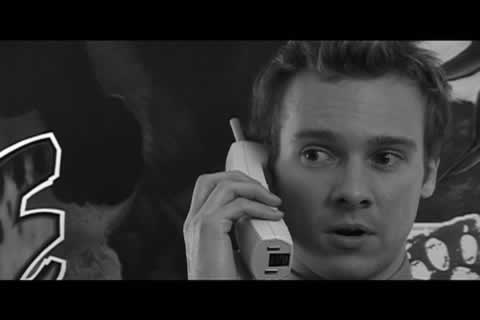
Copyright: Bite Me, Fan Boy is TM and © 2001 Epoch Entertainment. All rights reserved. Used with permission.

Copyright: Skeleton Krew is TM & © 2001 BOXTOPTV.COM. All rights reserved. Used with permission.
Extreme Close Up (ECU)
This is an "in your face' shot. The "camera' comes in so tight on an object that only a small portion is visible.
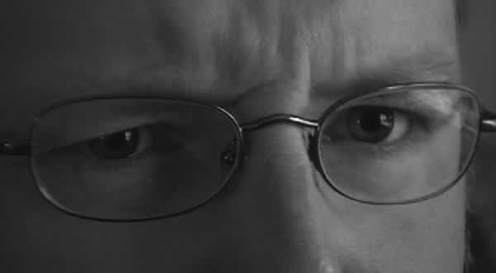
Copyright: Ways of Knowing is TM & © 2001 Reel Radicals. www.reelradicals.com. All rights reserved. Used with permission.

© 2001 Anthony C. Caputo.
Over the Shoulder Shot (OSS)
One of Wally Wood's "22 Panels that Always Work,' and a very common cinematic approach to depicting two characters conversing. It includes the back of the neck or the shoulder of one character (in the foreground) on one side of the frame, while another character is open to the "camera.'

Copyright: Ways of Knowing is TM & © 2001 Reel Radicals. www.reelradicals.com. All rights reserved. Used with permission.

Copyright: Operation Extermination is TM & © 2001 CWS Studios. All rights reserved. Used with permission..
Dolly Shot
When the camera moves into or away from the subject, described as Dolly In or Dolly Out. This one is usually film specific and can be confused with "Zoom Shot." However, this involves a constant depth of field, and not using a zoom lens, which may change the perception of the environment.
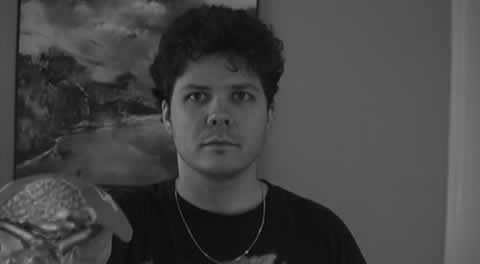


Copyright: Ways of Knowing is TM & © 2001 Reel Radicals. www.reelradicals.com. All rights reserved. Used with permission.
Zoom
Used to bring the image from wide angle to telephoto by narrowing the angle of view of the lens. (Zoom In) or bring the image from telephoto to wide angle. (Zoom Out) by enlarging the angle of view or the amount of the environment visible within the frame.
Zooming, along with and instant-to-instant form of shot, can be a great device if used correctly. It is an easy way to show movement, even if none is taking place. You can also use it to build suspense, drama or to force a reader to focus in on something or someone specifically. Some interesting uses of zooming are:
- Zoom in as a character approaches the picture plane.
- Zoom out as a figure recedes into the panel.
- Great way to show danger, etc. - close in as you zoom in on something/one.



Copyright: Ways of Knowing is TM & © 2001 Reel Radicals. www.reelradicals.com. All rights reserved. Used with permission.

Copyright: Ralph Snart is TM & © 1995 Marc Hansen and NOW Comics. www.nowcomics.com. All rights reserved. Used with permission.

Copyright: Strangers in Paradise is TM & © 2001 Abstract Studios. All rights reserved. Used with permission.
Tracking Shot
When a camera moves on tracks with a moving subject.
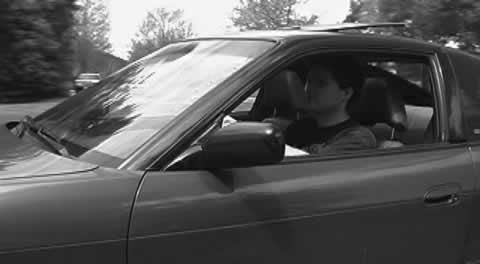


If I'd had known this was to be published online, I'd have saved the video itself.
Copyright: Ways of Knowing is TM & © 2001 Reel Radicals. www.reelradicals.com. All rights reserved. Used with permission.

Copyright: Strangers in Paradise is TM & © 2001 Abstract Studios. All rights reserved. Used with permission.
Low Angle Shot
When the camera is placed below eye level and tilted upward.

Copyright: Ways of Knowing is TM & © 2001 Reel Radicals. www.reelradicals.com. All rights reserved. Used with permission.

Copyright: Bite Me, Fan Boy is TM and © 2001 Epoch Entertainment. All rights reserved. Used with permission.

Copyright: Operation Extermination is TM & © 2001 CWS Studios. All rights reserved. Used with permission.
High Angle Shot
When the camera is placed below eye level and tilted downwards.

Copyright: Skeleton Krew is TM & © 2001 BOXTOPTV.COM. All rights reserved. Used with permission.

Copyright: Ways of Knowing is TM & © 2001 Reel Radicals. www.reelradicals.com. All rights reserved. Used with permission.
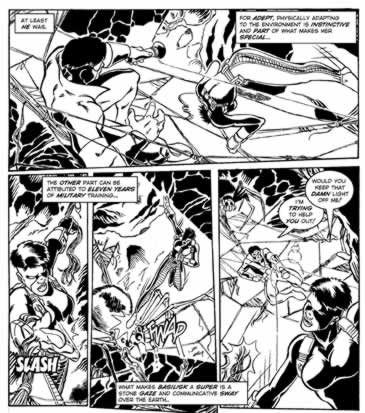
Copyright: Cadre is TM & © 2001 Nifty Comics. www.niftycomics.com. All rights reserved. Used with permission.
Bird's Eye View
An extreme down-shot from far overhead, and sometimes used as an establishing shot. Traditionally, many 2D interactive role-playing games use a bird's eye view of the environment and characters.

Copyright: SepterraCore is TM & © 1999 Valkryie Studios. All rights reserved. Used with permission.

Copyright: Skeleton Krew is TM & © 2001 BOXTOPTV.COM. All rights reserved. Used with permission.
Reaction Shot
This scene can be used to depict a character's reaction to dialogue or action.

Copyright: Skeleton Krew is TM & © 2001 BOXTOPTV.COM. All rights reserved. Used with permission.

Copyright: Ways of Knowing is TM & © 2001 Reel Radicals. www.reelradicals.com. All rights reserved. Used with permission.
Dissolve
The overlapping of the fading out of one shot and the fading in of another, giving the impression that the second shot appears out of the first. Also sometimes called Lap Dissolve.



Copyright: Ways of Knowing is TM & © 2001 Reel Radicals. www.reelradicals.com. All rights reserved. Used with permission.
Fade
Used when the shot is to gradually disappear into black. (Fade Out) or to gradually appear out of the black (FADE IN).



Copyright: Ways of Knowing is TM & © 2001 Reel Radicals. www.reelradicals.com. All rights reserved. Used with permission.
Wipe
Two shots in which the second pushes the first off the screen (optical effect)


Copyright: Strangers in Paradise is TM & © 2001 Abstract Studios. All rights reserved. Used with permission.
Superimposition
Overlapping two or more images so that these two or more images can be seen on the screen at the same time.

Copyright: NOW Comics' Fright Night is © Sony Pictures. All rights reserved. Used with permission.

Copyright: © 2001 Anthony C. Caputo. All rights reserved.
Off-Camera (OC) or Off-Stage (OS)
Dialogue delivered without being on screen.

Copyright: BONE is TM & © 2001 Cartoon Books & Jeff Smith. All rights reserved. Used with permission.
POV Shot
Point-of-View shot; camera angle from the perspective of one actor.

Operation Extermination is TM & © 2001 CWS Studios. All rights reserved. Used with permission.
Stage Right
To the performer's right side, to the audience's left side. Likewise, Stage Left is to the performer's left, the audience's right. Stage directions are for actors, not audiences, therefore they are always given from the actor's point of view to the audience.
Up Stage
(a) The area located at the back of the stage. Down Stage is the area in front of the performer.
(b) To draw attention to oneself at the expense of a fellow performer.


